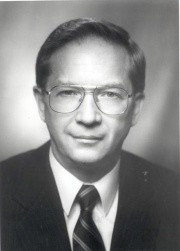- unknown (b.)
Bio/Description
Born in Pasadena, California, he attended Carnegie Tech (now Carnegie Mellon University) for his undergraduate and doctoral work in physics. He remained at Carnegie on the faculty for one year before joining IBM in research in 1957. Within a year he became manager of the Metals Physics Group. He subsequently led IBM?s development of a thin magnetic film memory array used in the top-performance IBM System/360 computer, led research and development in magnetic bubbles and other memory technologies, and established a project to develop a word processor for the Japanese language. Working independently, or as part of the IBM Technical History Project, beginning in the early 1980s, he authored or co-authored four books on the history of IBM and its technical developments. He retired from IBM in 1993. His involvement in the IEEE began in 1964 when he presented a paper at an IEEE conference, and shortly after joined IEEE as a senior member. His first volunteer activity was as editor of IEEE Transactions on Magnetics, beginning in 1968. Further activities led to his serving as President of the Magnetics Society in 1973-1974, followed by Division Director, Executive Vice President, Vice President Technical Activities, and finally IEEE President in 1989. He was also active on the IEEE History Committee, Trustees of the History Center and the IEEE Foundation, serving as President of the Foundation from 2000 through 2004. He placed emphasis on extending IEEE?s transnational reach; the impact political changes in Eastern Europe and the end of the Berlin Wall would have; changes in IEEE management structure; moving to Piscataway; and revised IEEE?s Code of Ethics.
-
Gender:
Male -
Noted For:
Leader of IBM’s development of a thin magnetic film memory array used in the top-performance IBM System/360 computer; leader of research and development in magnetic bubbles and other memory technologies; and, launched a project to develop a word processor for the Japanese language -
Category of Achievement:
-
More Info:


